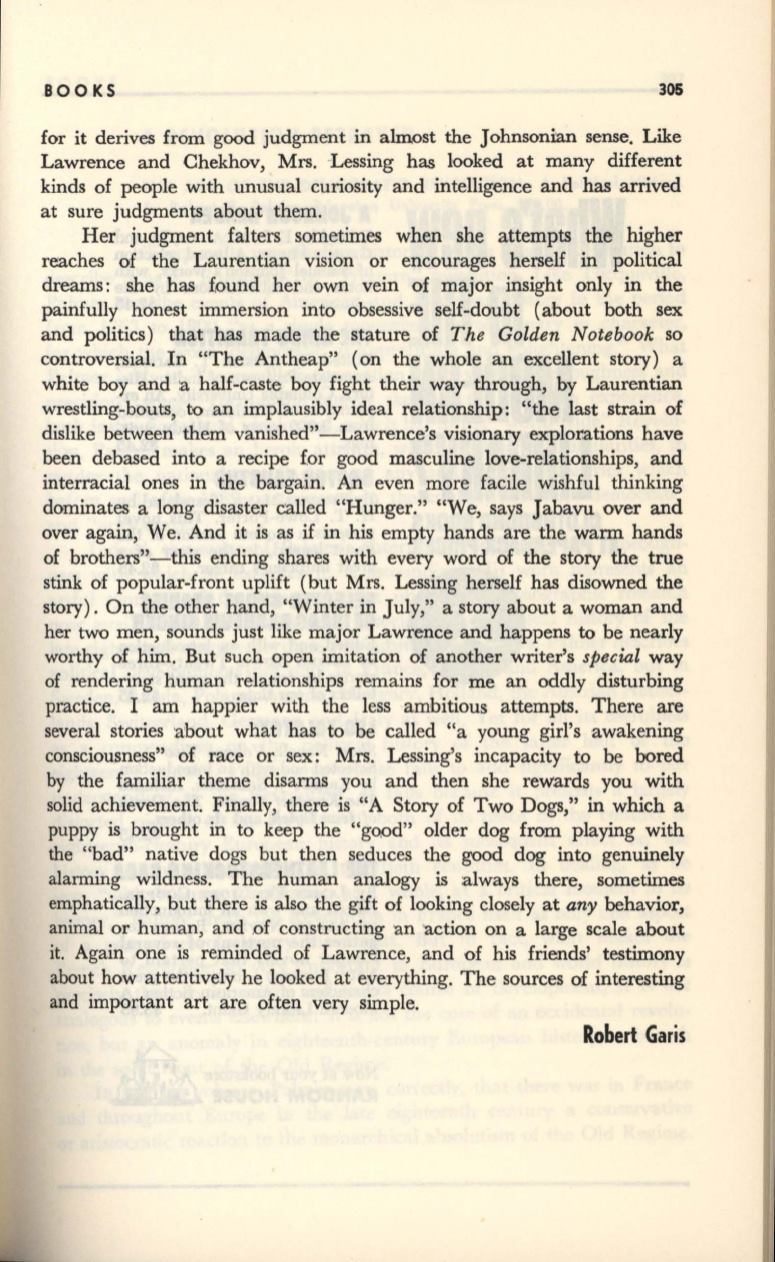
BOO KS
305
for it derives from good judgment in almost the Johnsonian sense. Like
Lawrence and Chekhov, Mrs. -Lessing has looked at many different
kinds of people with unusual curiosity and intelligence and
has
arrived
at sure judgments about them.
Her judgment falters sometimes when she attempts the higher
reaches of the Laurentian vision or encourages herself in political
dreams: she has found her own vein of major insight only in the
painfully honest immersion into obsessive self-doubt (ahout both sex
and politics) that has made the stature of
The Golden Notebook
so
controversial. In "The Antheap" (on the whole an excellent story) a
white boy and a half-caste boy fight their way through, by Laurentian
wrestling-bouts, to an implausibly ideal relationship: "the last strain of
dislike between them vanished"-Lawrence's visionary explorations have
been debased into a recipe for good masculine love-relationships, and
interracial ones in the bargain. An even more facile wishful thinking
dominates a long disaster called "Hunger." "We, says Jabavu over and
over again, We. And it is as
if
in his empty hands are the warm hands
of brothers"
-this
ending shares with every word of the story the true
stink of popular-front uplift (but Mrs. Lessing herself has disowned the
story). On the other hand, "Winter in July," a story about a woman and
her
two
men, sounds just like major Lawrence and happens to be nearly
worthy of him. But such open imitation of another writer's
special
way
of rendering human relationships remains for me an oddly disturbing
practice. I am happier with the less ambitious attempts. There are
several stories about what has to be called "a young girl's awakening
consciousness" of race or sex: Mrs. Lessing's incapacity to be bored
by the familiar theme disarms you and then she rewards you with
solid achievement. Finally, there is "A Story of Two Dogs," in which a
puppy is brought in to keep the "good" older dog from playing with
the "bad" native dogs but then seduces the
good
dog into genuinely
alarming wildness. The human analogy is always there, sometimes
emphatically, but there is also the gift of looking closely at
any
behavior,
animal or human, and .of constructing an action on a large scale about
it. Again one is reminded of Lawrence, and of his friends' testimony
about how attentively he looked at everything. The sources of interesting
and important art are often very simple.
Robert Garis


